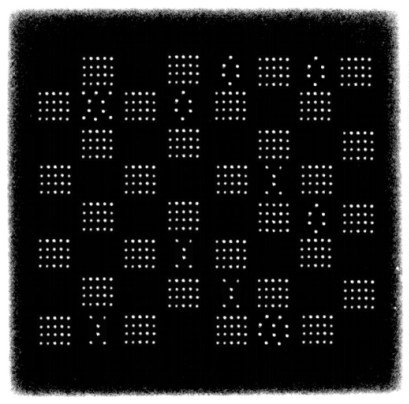History of Science
Master’s Thesis
My Master’s thesis was on the role of game-playing in the history of computing. I argued that games like checkers (called “draughts” in the UK) and chess were not a mere frivolity. The computer scientists who wrote chess and checkers programs were among the most innovative and accomplished intellectuals of their time, and they viewed these games as core to their work. Many of the central developments in artificial intelligence (including the first-ever use of the term “machine learning”) came from games.

A game of draughts (checkers) illuminated by cathode ray tubes. Build by Christopher Strachey in Manchester in 1948.


Left: The birth of machine learning. Arthur Samuel’s self-improving checkers program.
RIght: John McCarthy, who coined the term “artificial intelligence”, was an avid (albeit mediocre) chess player and programmer.
The second theme that ran through my thesis was the relationship between chess, computing, and the Cold War. The United States and the Soviet Union were two adversaries, sitting on opposite sides of a geopolitical chessboard, each trying to out-maneuver the other. Scientists like Norbert Weiner, Herb Simon, and John von Neumann modelled these adversarial dynamics computationally, using the same computers and same techniques they used to program chess. This was the birth of game theory: the study of mult-player zero-sum games, from chess to nuclear war.
You can read the full thesis as a Google Doc or download it as a PDF.
You can read the full thesis as a Google Doc or download it as a PDF.
Electrical Analogies
One of the most inspiring books I’ve ever read was Surfaces and Essences: Analogy as the Fuel and Fire of Thinking by Douglas Hofstadter and Emmanuel Sander

It argues, through an absolute torrent, an utter tidal wave of examples upon examples upon examples, that analogy is core to every single aspect of human thought. Every act of language, every scientific breakthrough, every musical idea is rooted in finding similarities between familiar situations and new ones. Our language is permeated with words borrowed from other contexts, and our minds are infinitely flexible in their ability to draw connections (see, for example, the way I just used the words “permeated”, “borrowed”, “flexible”, and “draw”).
I wanted to apply this framework to physics, where analogies abound. Everything in physics—like everything everywhere—is analogies. We think of particles as springs, electricity as current, batteries as...batteries (the word “battery” comes from the fact that Benjamin Franklin put a bunch of electric jars beside each other and connected them together to have them “fire” at the same time, just like a battery of weapons on a war ship).
![]()
![]()
A battery of Leyden Jars and a depiction of the flow of electricity.
The more you dig into analogies in the history of electricity, the more you realize they’re inescapable. “Electric” means “similar to amber” (a tree sap that can easily cause an electric shock); “Current” is an explicit fluid analogy; the idea of particles being “negative” or “positive” comes from an extended banking analogy; “charge” comes from loading a rifle; “anion” literally means “that which goes up” because Michael Faraday’s put one rod above another to separate charged particles.
My favorite analogy, however, comes from legendary Scottish physicist and night owl James Clerk Maxwell.
I wanted to apply this framework to physics, where analogies abound. Everything in physics—like everything everywhere—is analogies. We think of particles as springs, electricity as current, batteries as...batteries (the word “battery” comes from the fact that Benjamin Franklin put a bunch of electric jars beside each other and connected them together to have them “fire” at the same time, just like a battery of weapons on a war ship).


A battery of Leyden Jars and a depiction of the flow of electricity.
The more you dig into analogies in the history of electricity, the more you realize they’re inescapable. “Electric” means “similar to amber” (a tree sap that can easily cause an electric shock); “Current” is an explicit fluid analogy; the idea of particles being “negative” or “positive” comes from an extended banking analogy; “charge” comes from loading a rifle; “anion” literally means “that which goes up” because Michael Faraday’s put one rod above another to separate charged particles.
My favorite analogy, however, comes from legendary Scottish physicist and night owl James Clerk Maxwell.

Maxwell conceived of electricity and mangetism as some kind of stretching or tension or pressure in the luminiferous aether, a hypothetical fluid that pervades all of physical space. He then used this model of molecular vortices to deduce that (1) “a changing magnetic field induces an electric current, and vice-versa; the electric and magnetic fields can be thought of as waves at ninety degrees to each other”, and (2) “light consists in the transverse undulations of the same medium which is the cause of electric and magnetic phenomena.” A grand unified theory of electromagnetism and light from a little toy model. Not half bad.

Maxwell’s Molecular Vortices
Charles Babbage
During my second year of undergrad I developed a minor obsession with Charles Babbage, the irascible mathematician who was responsible for designing the first mechanical computer. The following semester, I went on exchange and spent a bunch of time trying to find Babbage’s childhood home and trace back his legacy at various museums. Those foibles led me to give a TEDx talk at McMaster on the lessons I’d learned along the way
Babbage was such an interesting figure to me because he was two things I am not: grumpy and visionary. He saw the idea of a digital programmable computer with such clarity, but he also yelled at kids on the street for having too much fun. He reinvigorated the fields of economics and statistics from a 19th century stupor, but he also wrote a letter to the Poet Laureate saying that the line “every minute dies a man / every minute one is born” is factually inaccurate and a more accurate line would be “every minute dies a man / and one and a sixteenth is born”. King. Here’s the full paper.

My guy Charles Babbage